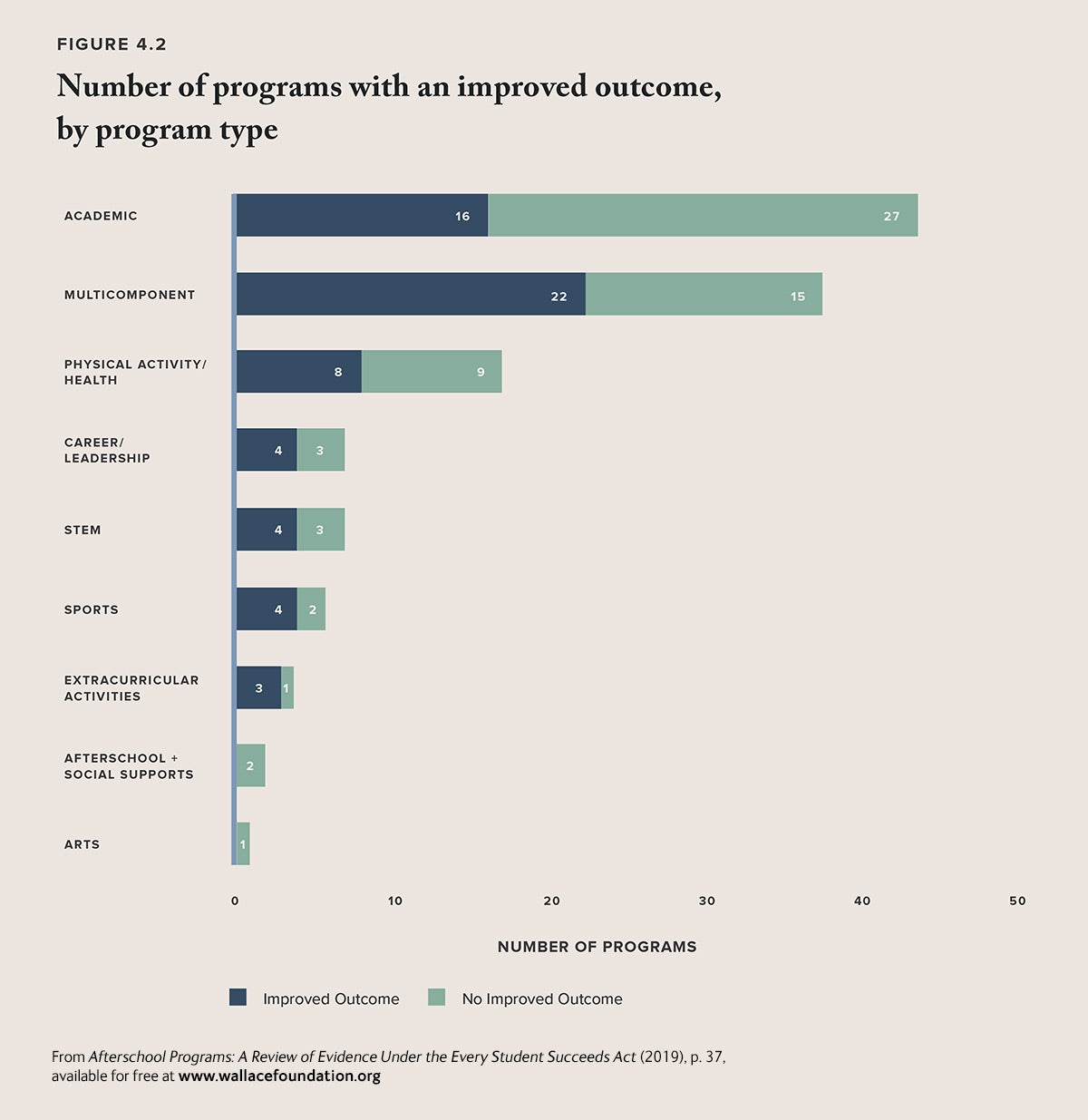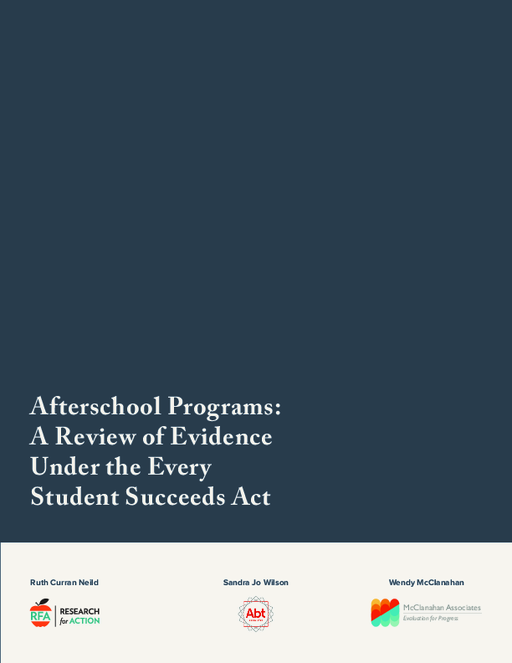Breadcrumb
- Wallace
- Reports
- Afterschool Programs A Review Of...
Afterschool Programs
A Review of Evidence Under the Every Child Succeeds Act

- Author(s)
- Ruth Curran Neild, Sandra Jo Wilson, and Wendy McClanahan
- Publisher(s)
- Research for Action
Summary
How we did this
This review summarizes virtually all available evidence on the effectiveness of specific afterschool programs. It is based on a comprehensive literature search and review of studies published from 2000 through 2017.
How effective are afterschool programs? This report, a review of research from 2000 to 2017, seeks to answer that question. It also provides recommendations for everyone from program providers to federal officials.
A Framework from the Every Student Succeeds Act
Researchers evaluated programs using standards laid out in the 2015 Every Student Succeeds Act (ESSA). The law provides a major source of federal funding for afterschool programs in the United States. It also encourages—and in some cases requires—that funded programs have strong evidence of effectiveness.
ESSA classifies evidence into four groups, called “tiers.” Each tier represents a different degree of rigor for the research behind the evidence. Tier I is the most rigorous research, such as randomized control trial studies. The report authors use the tiers to assess the evidence of the effectiveness of more than 100 afterschool programs.
Positive Outcomes
This report found 124 K-12 afterschool programs that met the research requirements of ESSA’s top three tiers. Specifically:
- Half of the programs showed positive impacts on students.
- These 62 programs focused on everything from academics and physical fitness to career development.
- They improved outcomes in a variety of areas, ranging from mathematics and reading/ELA achievement to social and emotional competencies.
Recommendations
The report makes recommendations for program providers, states, program evaluators, and the federal government. Among them:
Remember that it’s common for programs to be effective in some areas but not others.
Align the program’s purpose to how you measure its outcomes. The federal government should encourage measurement of outcomes that reflect a program’s goals. That means, for example, avoiding using test scores to assess the effectiveness of a non-academic program.
Consider allowing for a lower-tier standard in some cases. States can consider using a more liberal standard for afterschool programs until there are more programs with evidence meeting Tiers I, II, and III.
Consider evidence as one tool. Research evidence should be seen as one tool to help program providers increase the likelihood of offering effective programs. It should not replace a program provider’s good judgment.
The report is accompanied by a detailed guide to the afterschool programs with evidence that meets research requirements of the top three ESSA tiers. The guide also includes summaries of studies of school-sponsored extracurricular programs. These studies evaluated programs that combine afterschool and summer learning or provide evidence at Tier IV.
Key Takeaways
- This report describes more than 60 afterschool programs with evidence of effectiveness strong enough to meet the standards of the federal Every Student Succeeds Act.
- Programs improved a variety of outcomes, ranging from mathematics and reading to social and emotional competencies.
- Research evidence should be used as a tool that helps program providers increase the likelihood of offering effective programs. It should not replace a program provider’s good judgment.
Visualizations

Materials & Downloads
What We Don't Know
- Are afterschool programs as a class effective at improving student outcomes?
- Can generalizations be made across programs about the effectiveness of specific program components?

